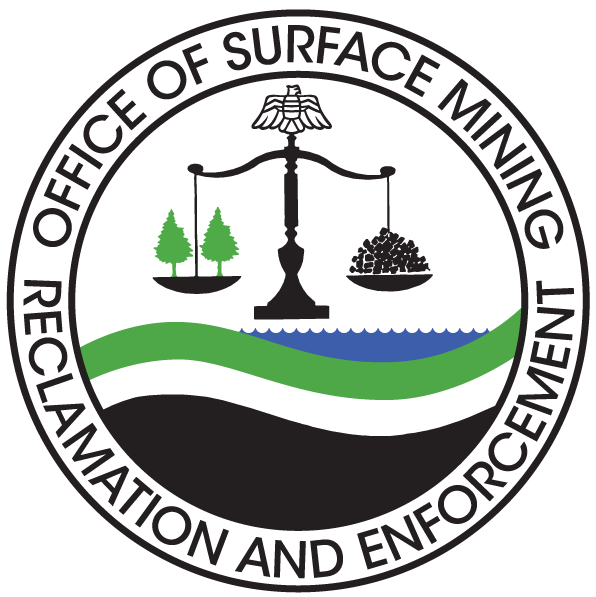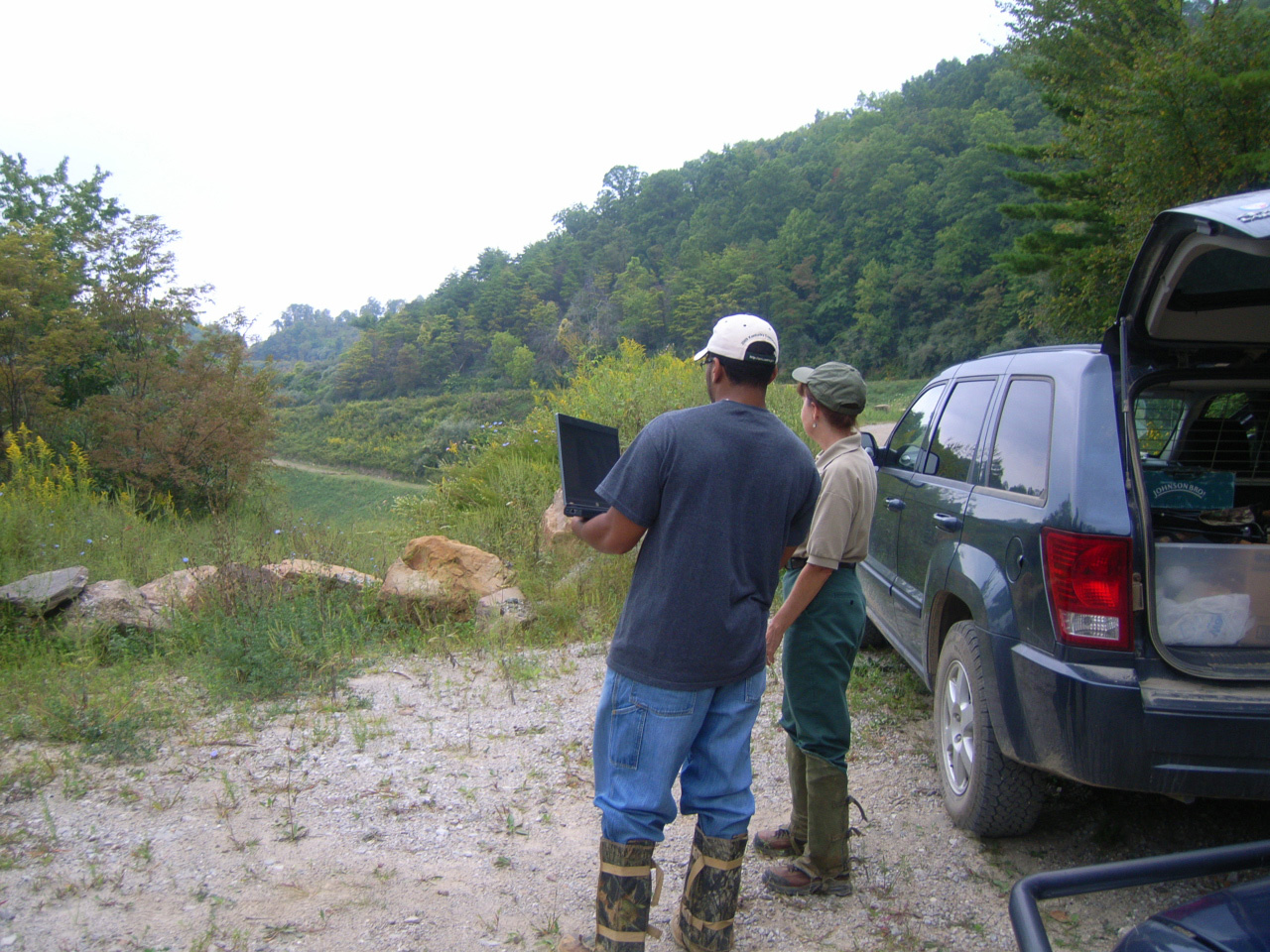National Environmental Policy Act
The National Environmental Policy Act (NEPA) of 1969 (signed into law on January 1, 1970) establishes a basic framework for environmental protection in the United States. The overall purpose of NEPA is to ensure that federal agencies evaluate the potential environmental impacts of their actions and consider the consequences when determining whether or not to proceed with the action. OSMRE must comply with NEPA whenever the bureau proposes to take an action, or authorizes any other entity to take an action, that could possibly affect environmental resources.
The objectives of NEPA include:
- Ensuring that federal agencies consider environmental concerns equally with technical, social and economic concerns, and
- Enhancing public participation in government planning and decision making
For more information regarding NEPA related regulations and the Department of the Interior's NEPA responsibilities, please visit:
CEQ Regulations
Regulations for Implementing the Procedural Provisions of the National Environmental Policy Act
Frequently Asked Questions
Frequently asked questions will be updated as needed. Have a question that's not answered below? Contact Christine Allen at ceallen@osmre.gov.
The National Environmental Policy Act (NEPA) (42 U.S.C. §§ 4321 et seq.) is a federal law that directs federal agencies to evaluate potential environmental impacts before making decisions and implementing federal actions.
The purposes of NEPA are to:
- Declare a national environmental policy
- Promote efforts to prevent environmental damage
- Enrich understanding of the ecosystem and natural resources
- Establish the Council on Environmental Quality (CEQ)
The purpose of the OSMRE NEPA Handbook is to:
- Provide an overview of NEPA and its implementing regulations, as well as basic guidance for Office of Surface Mining Reclamation and Enforcement (OSMRE) personnel on how to integrate NEPA into OSMRE decision-making processes.
- Improve the internal OSMRE management of NEPA-related regulatory responsibilities in addition to providing practical application of these regulations.
- Assist OSMRE personnel with the implementation of OSMRE’s NEPA compliance responsibilities, and inform State and Tribal entities who prepare environmental documents as part of OSMRE’s NEPA process.
The handbook provides a general overview of the NEPA process and the pathways (categorical exclusion [CE], environmental assessment [EA], and environmental impact statement [EIS]) to comply with NEPA. It contains a general overview of the legal framework (including the applicability of other environmental legislation) that requires OSMRE to integrate NEPA into the decision making process.
The handbook also contains Department of the Interior (DOI) policy and guidance that provide instructions for the implementation of NEPA.In addition, the handbook describes ways to develop a comprehensive project approach for project management throughout the NEPA process.
The OSMRE NEPA Handbook is written for OSMRE employees who are involved in the NEPA review process. In addition, the NEPA Handbook can be used as an information resource for State and Tribal organizations and contractors who prepare environmental documents as part of OSMRE’s NEPA process.
As of July 31, 2019, the new OSMRE NEPA Handbook is accessible via OSMRE’s internet website.
The OSMRE NEPA Handbook became effective on September 30, 2019.
Since all NEPA-related compliance information has been removed from the FAM and placed in the new NEPA Handbook, the States/Tribes and others who prepare environmental documents to submit to OSMRE will now refer to the handbook for NEPA-related compliance information. Guidelines for preparing an environmental assessment are now in the OSMRE NEPA Handbook.
The Environmental Assessment (EA) template in the FAM is no longer applicable. Instructions for preparing an EA are located in the Handbook.
Yes. OSMRE’s National Technical Training Program (NTTP) conducts a NEPA Fundamentals Course annually (or biannually depending upon demand). For more information about OSMRE’s Training Program and the NEPA Fundamentals Course, please visit the NTTP website.
Options for NEPA training beyond the NTTP NEPA Fundamentals Course are available upon request. Please check with your OSMRE NEPA Point of Contact.
On August 15, 2017, the President of the United States issued Executive Order (EO) 13807, which requires all federal agencies to establish discipline and accountability in the environmental review process for infrastructure projects.
In response to EO 13807, DOI issued Secretarial Order (SO) 3355 on August 31, 2017, followed by several guidance documents related to NEPA streamlining, with the intent, among other things, to immediately implement improvements to the NEPA review process for all actions subject to NEPA within the Department. To ensure consistent compliance with the SO 3355, each Bureau was required to update its NEPA Handbook.
Moreover, the OSMRE NEPA Handbook was outdated, having been initially published in 1989. Since then, Departmental policies and procedures have changed.
OSMRE’s National NEPA Team revised the NEPA Handbook. The revision team is comprised of representatives from each OSMRE Region, OSMRE Headquarters, and the Office of the Solicitor (SOL). The Handbook went through an extensive peer review process, which included the DOI’s Office of Environmental Policy and Compliance (OEPC), OSMRE NEPA Regional and Field Office staff, and the DOI Solicitors.
DOI’s responsibilities and guidance for implementation of NEPA are found on the DOI NEPA website.
What is the rationale for the determination to require all AML Pilot projects to have an EA even if the activity funded by an AML Pilot project is identical to an AML project covered by a CE? Is the need for an EA for a project typically covered by a CE just based on the funding source and not the impact of the project?
- Currently, OSMRE CEs cover reclamation work but do not cover economic/community development activities. AML Pilot projects are required to have an economic/community development nexus that must be assessed as part of the NEPA analysis for the project and because there is not an established CE for AML Pilot project, an EA is the minimum level of NEPA analysis currently required.
No, however, OSMRE will not issue an ATP until the NEPA analysis is complete. After receiving the State’s/Tribe’s environmental information, OSMRE will determine whether a CE, EA or EIS is warranted and sign (and date) the CE, FONSI or ROD. After OSMRE has signed the CE, FONSI, or ROD, OSMRE will verify that all ATP criteria has been met, and issue the ATP within 14 days.
Yes, a list of the information that should be included for an ATP is outlined below:
- Confirmation that you have entered the problem area information into e-AMLIS in compliance with directive AML-1. Until the ATP is issued, problem features proposed for reclamation shall be entered in the unfunded category for the particular site.
- Environmental documents with compliance information for the National Environmental Policy Act (NEPA) and other environmental requirements. See OSMRE REG-1, Handbook on Procedures for Implementing the National Environmental Policy Act (NEPA Handbook) (Revised 2019) for a detailed description of the appropriate environmental compliance information and documents. This criteria is not fulfilled until OSMRE has signed a Record of Decision (ROD), Finding of No Significant Impact (FONSI), or Categorical Exclusion (CE).
- AML eligibility statement and basis for claiming AML eligibility.
- For AML enhancement projects, or Title IV projects less than 50% governmentally funded, the determinations document you developed jointly with the Title V State regulatory authority. See FAM Chapter 4-100-100 for more information.
Additional context for this list can be found in the Federal Assistance Manual (FAM), Chapter 4-170.
The 180 day timeline can begin once OSMRE receives sufficient information from the project proponent to analyze the proposed action; or publishes a Notice of Proposed Rulemaking in the Federal Register; or internally determines to pursue action planning. OSMRE will determine the start date of the NEPA process based on OSMRE having sufficient information to conduct the environmental review. The 180 day timeline applies to OSMRE’s review time and does not apply to the states.
The timeline directed by DOI Secretarial Order 3355 directs OSMRE and all DOI Bureaus to complete EAs within 180 days. For AML projects, the ATP package is not complete until the EA is completed. Coordination between OSMRE and the State AML program will support meeting project schedules and meet the timeline directed by Secretarial Order 3355.
While CEQ does not require the analysis of exactly three alternatives, federal agencies are directed to analyze the no action alternative, the proposed action, and any reasonable alternative(s) to the proposed action that meet the purpose and need of the project, and to "Rigorously explore and objectively evaluate all reasonable alternatives, and for alternatives which were eliminated from detailed study, briefly discuss the reasons for their having been eliminated." See 40 CFR 1502.14.
The OSMRE NEPA Handbook provides guidance on this topic in Chapter 8, Section 8.6.
Yes. The FY19 AML Pilot Guidance has been updated to reflect references to the new NEPA Handbook. In addition, the new NEPA Handbook applies to any outstanding AML Pilot project, irrespective of the AML Pilot funding year, that does not have a NEPA analyses conclusion completed as of September 30, 2019.


